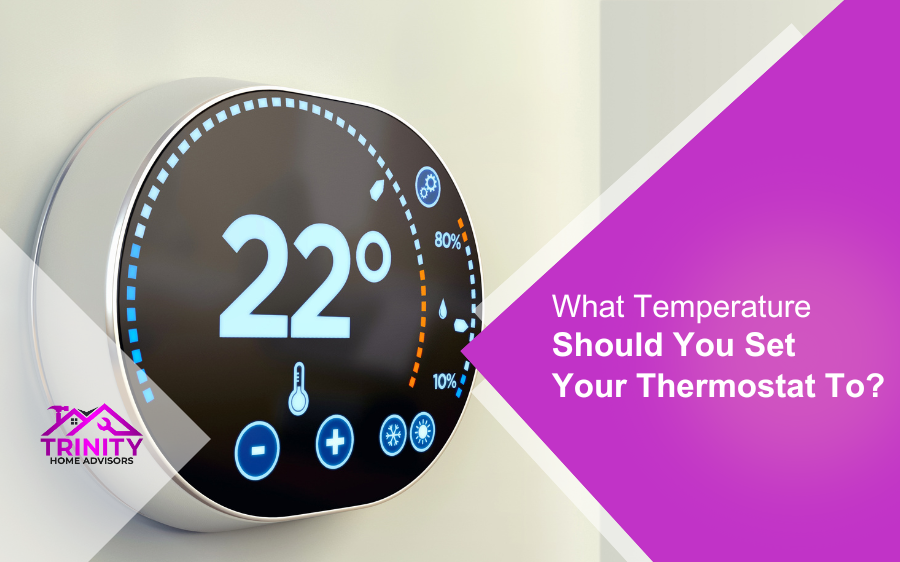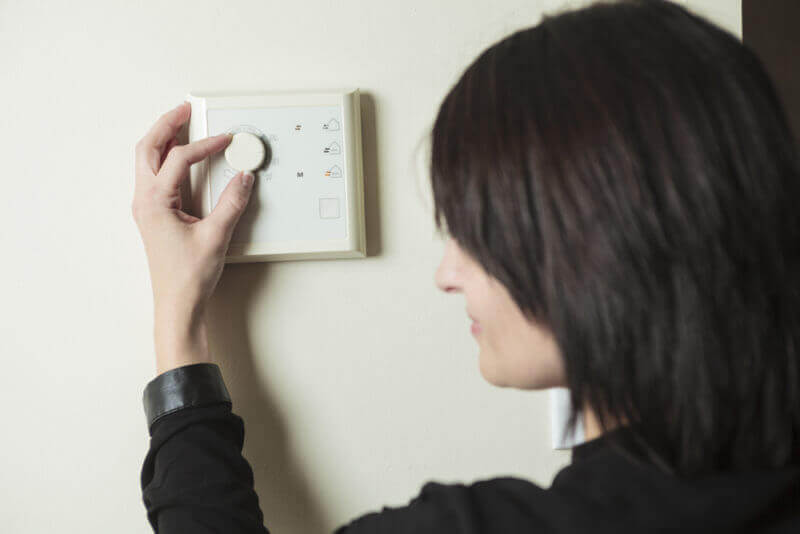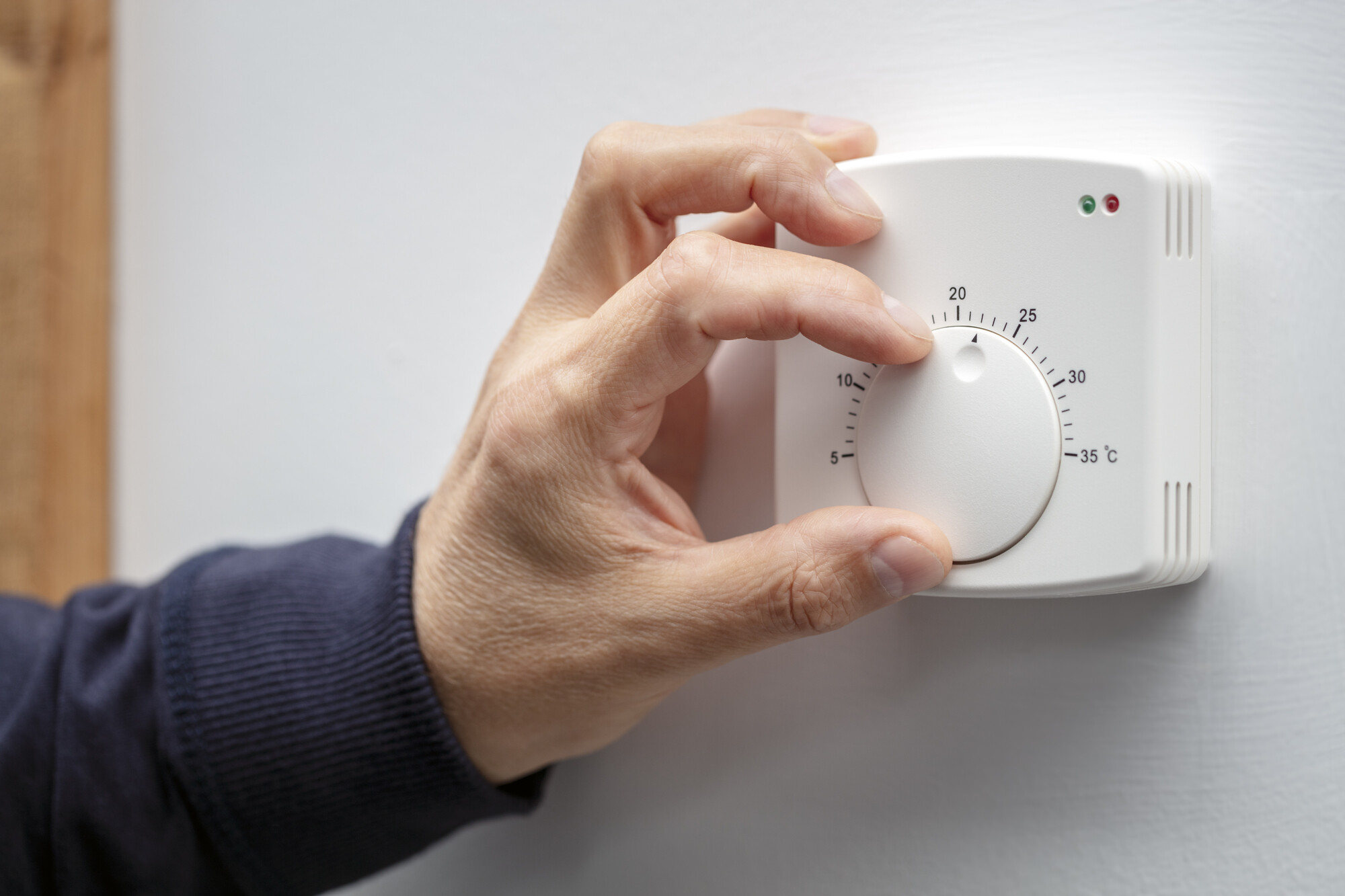How To Set Your Thermostat In The Winter

Winter's chill often brings a spike in energy bills. But smart thermostat settings and efficient heating practices can significantly reduce your energy consumption without sacrificing comfort. This guide provides actionable strategies for homeowners, businesses, smart home enthusiasts, and HVAC professionals to optimize thermostat settings and lower winter heating costs.
Understanding the Energy-Saving Potential
The U.S. Department of Energy (DOE) states that you can save as much as 10% a year on heating and cooling by simply turning your thermostat back 7°-10°F for 8 hours a day from its normal setting. This strategy, known as setback, leverages the principle that maintaining a constant temperature, even when no one is home, wastes energy. A well-programmed thermostat, whether traditional or smart, makes this process automatic.
Furthermore, consider the average American household spends around $1,200 annually on energy, with heating accounting for a significant portion. Implementing these techniques can translate into substantial savings over the winter months and beyond.
The Ideal Thermostat Settings for Winter
Determining the "ideal" thermostat setting is a balance between comfort and cost-effectiveness. While personal preferences vary, several guidelines offer a solid starting point:
Recommended Daytime Settings (When Home)
Aim for 68°F (20°C). This temperature is generally considered comfortable for most people while minimizing energy consumption. Experiment to find the lowest comfortable temperature for your household.
Recommended Nighttime/Away Settings
Set your thermostat to 60-62°F (15.5-16.5°C) when you are asleep or away from home. This larger setback allows your heating system to work less frequently and reduces overall energy waste. Some sources suggest even lower setbacks (e.g., 55°F) may be optimal, but individual home insulation and climate considerations play a role.
Important Considerations:
- Insulation: Well-insulated homes retain heat more effectively, allowing for greater temperature setbacks without sacrificing comfort.
- Building Envelope: Drafty windows and doors negate the benefits of thermostat adjustments. Seal air leaks with weather stripping and caulk.
- Personal Preferences: Individuals have different tolerances for cold. Factor in the needs of elderly residents or those with health conditions.
Programmable vs. Smart Thermostats: A Comparison
Both programmable and smart thermostats offer energy-saving benefits. However, smart thermostats provide advanced features and greater control.
Programmable Thermostats:
These thermostats allow you to set different temperatures for various times of the day or week. They are relatively inexpensive and easy to install. However, they require manual programming and do not adapt to changing schedules or external factors.
Smart Thermostats:
Smart thermostats learn your heating and cooling patterns and automatically adjust the temperature based on your preferences, occupancy, and even weather forecasts. Many models offer remote control via smartphone apps, allowing you to adjust the temperature from anywhere. Some even integrate with other smart home devices.
Key features of smart thermostats include:
- Learning Algorithms: Automatically adjusts temperature based on learned behavior.
- Geolocation: Detects when you are coming home and pre-heats the house.
- Remote Control: Adjust settings from anywhere using a smartphone app.
- Energy Reports: Provides detailed data on energy consumption.
- Integration with Smart Home Systems: Connects with other smart devices like lighting and security systems.
- Zoning Capabilities: Some smart thermostats allow for individual room temperature control via sensors.
Smart HVAC Integration for Maximum Efficiency
Integrating your thermostat with other smart home devices and sensors can further enhance energy efficiency.
Window and Door Sensors:
These sensors detect when windows or doors are open and can automatically pause the heating system to prevent energy waste.
Occupancy Sensors:
Occupancy sensors detect when a room is unoccupied and can automatically lower the temperature in that room. This is particularly beneficial in multi-zone systems.
Smart Blinds and Shades:
Automated blinds and shades can be programmed to open during the day to let in sunlight and close at night to provide insulation.
Integration with Weather Data:
Many smart thermostats access real-time weather data and adjust the heating system accordingly. For example, on a sunny day, the thermostat may lower the temperature to take advantage of solar heat gain.
HVAC Maintenance for Optimal Performance
Regardless of your thermostat settings, regular HVAC maintenance is crucial for optimal energy efficiency and system longevity.
Regular Filter Changes:
Dirty filters restrict airflow, forcing your heating system to work harder and consume more energy. Change your air filters every 1-3 months, or more frequently if you have pets or allergies. Using the correct MERV rating (Minimum Efficiency Reporting Value) for your system is also important to balance filtration and airflow.
Professional HVAC Tune-Ups:
Schedule a professional HVAC tune-up at least once a year to ensure your system is running efficiently. A technician can inspect and clean the system, check refrigerant levels, and identify any potential problems before they lead to costly repairs or reduced efficiency.
Ductwork Inspection and Sealing:
Leaky ductwork can result in significant energy loss. Have your ductwork inspected and sealed to prevent air leaks. According to the EPA, duct sealing can improve HVAC efficiency by as much as 20%.
Consider System Upgrades:
Older systems may be operating far below modern efficiency standards. Upgrading to a new, high-efficiency furnace or heat pump can offer significant long-term energy savings. Look for Energy Star certified models.
Available Rebates and Incentives
Many utility companies and government agencies offer rebates and incentives for energy-efficient upgrades, including smart thermostats and high-efficiency HVAC systems. Research available programs in your area to reduce the upfront cost of these investments.
Examples include:
- Utility Rebates: Many utility companies offer rebates for purchasing and installing smart thermostats or high-efficiency HVAC systems.
- Federal Tax Credits: The federal government offers tax credits for certain energy-efficient home improvements.
- State and Local Programs: Check with your state and local governments for additional incentives.
The Inflation Reduction Act includes provisions that could offer significant rebates and tax incentives for home energy upgrades.
Calculating ROI: A Real-World Example
Let's consider a homeowner who spends $1,500 annually on heating and cooling and installs a smart thermostat. By implementing the recommended thermostat settings and leveraging the thermostat's learning capabilities, they reduce their energy consumption by 10%. This translates to annual savings of $150. If the smart thermostat costs $200 and is eligible for a $50 utility rebate, the net cost is $150. The homeowner will recoup their investment in just one year.
Over the lifespan of the thermostat (e.g., 10 years), the homeowner could save $1,500 (excluding potential increases in energy costs), representing a significant return on investment.
Troubleshooting Common Issues
Even with optimal thermostat settings, you may encounter issues that impact heating efficiency.
Uneven Heating:
If some rooms are warmer than others, check for blocked vents, closed doors, or inadequate insulation. Consider using space heaters in particularly cold rooms or installing a zoning system to control individual room temperatures.
Drafts:
Seal air leaks around windows, doors, and electrical outlets. Install weather stripping and caulk to prevent drafts.
High Energy Bills:
If your energy bills are still high despite implementing energy-saving measures, have your HVAC system inspected by a professional. There may be underlying issues that are impacting efficiency.
Conclusion
Optimizing thermostat settings is a crucial step towards reducing winter heating costs. By implementing the strategies outlined in this guide – including utilizing setbacks, investing in smart thermostats, integrating with smart home systems, performing regular HVAC maintenance, and taking advantage of available rebates – homeowners, businesses, and HVAC professionals can achieve significant energy savings and contribute to a more sustainable future. Remember, consistent effort and attention to detail are key to maximizing your return on investment and minimizing your environmental impact. The small steps, combined, can lead to big savings.










